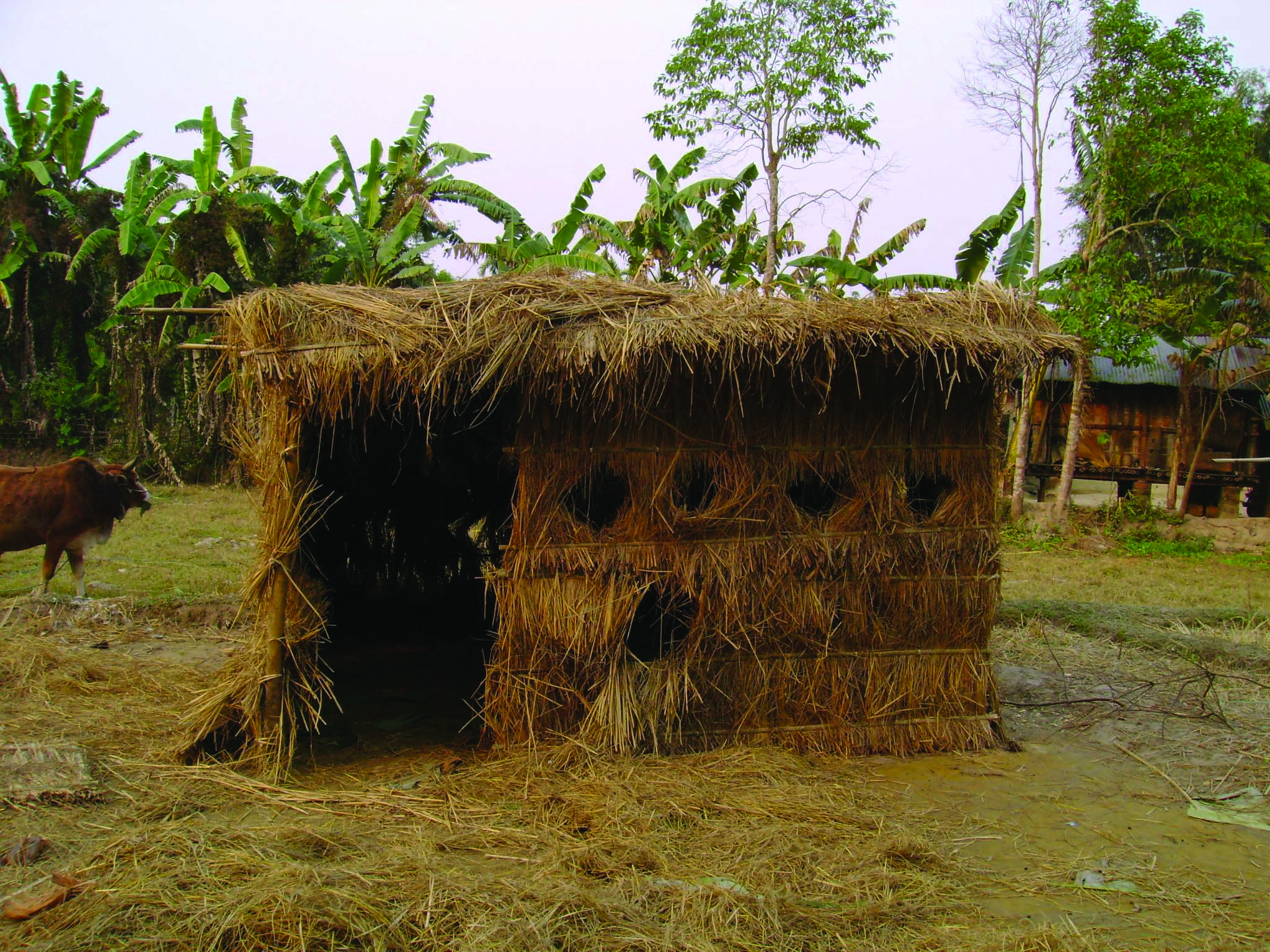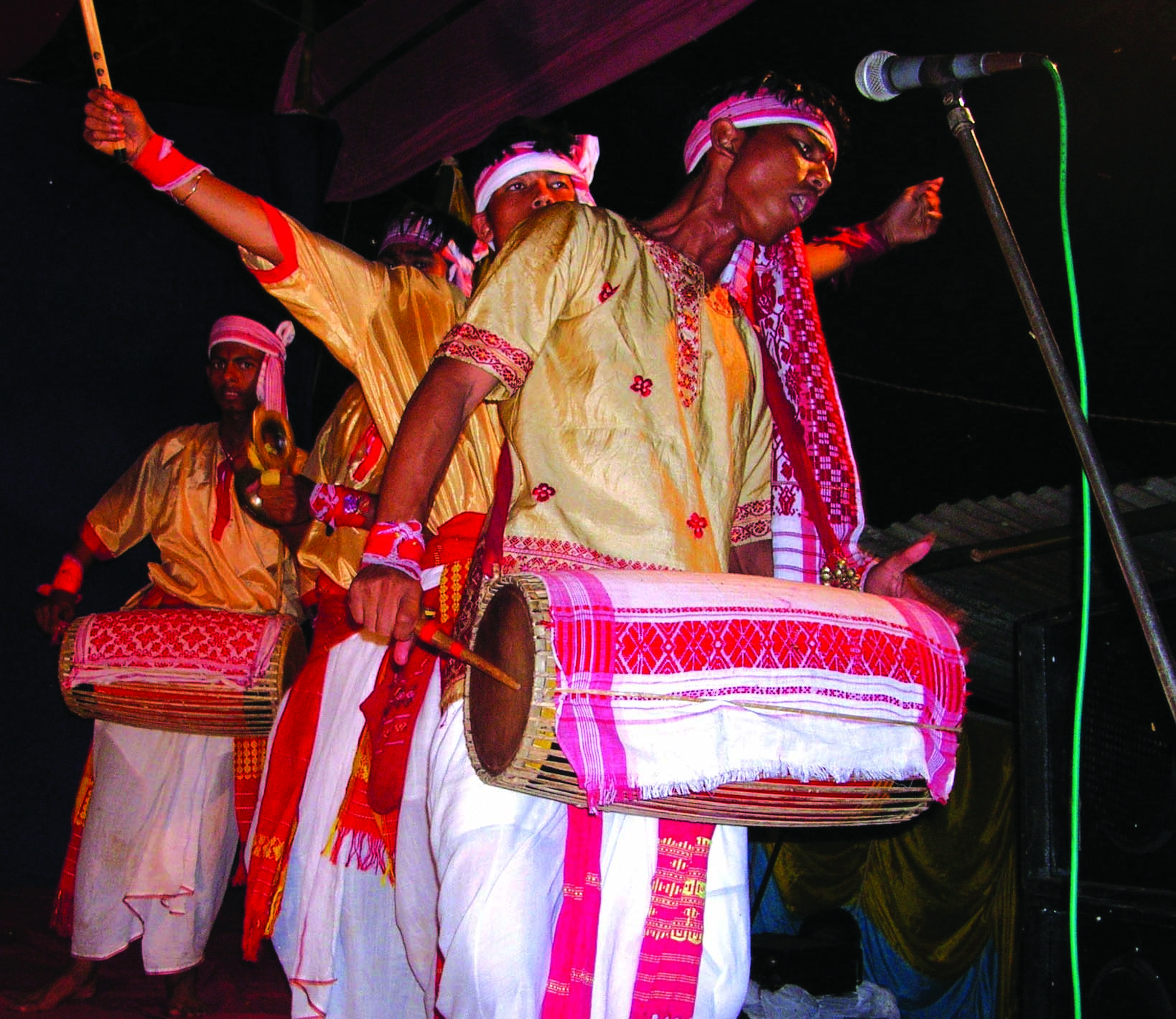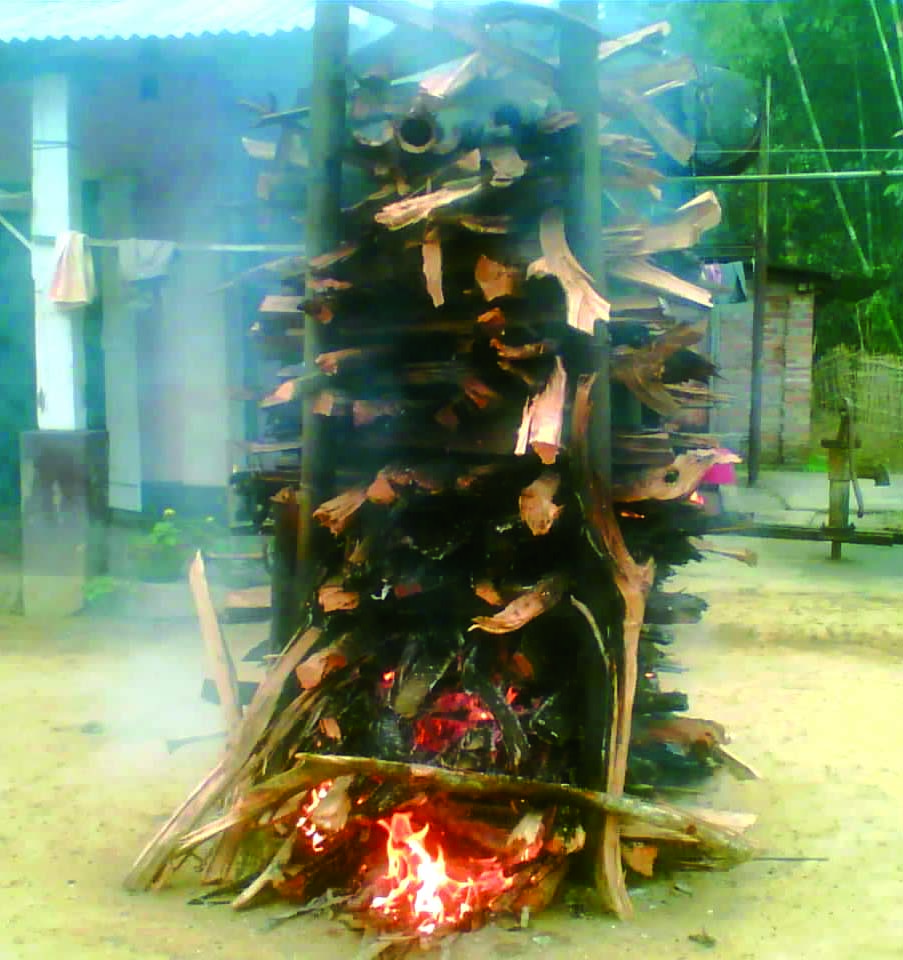Table of Contents
Chapter 20
Eating Together
Eating Together
Class Party
The school reopened today after the vacations. The children share news about how they spent their holidays.
“When did you put mehendi on your palms?” Meena asked Aarti. “At my uncle’s wedding,” Aarti said. “You must have had a lot of fun at the wedding,” David said. “Oh, yes! I enjoyed the wedding feasts the most,” Aarti said. “At the wedding, we had fun with all my cousins and other relatives eating and doing everything together.” Aarti said, “Why don’t we do something like this in school? Let us also have some fun together.” Rehana asked.
“I have an idea,” David said. “Why don’t we have a class party ? Then we can also eat and have fun together.” “We have parties in our colony whenever there is a festival. We collect money from everyone for the party. We cook some dishes and buy other things from the market,” Rehana said.

Reena said, “We don’t need a festival to have a party. Saturday is half-day. Why don’t we plan to have our party then?”
Everyone in the class decided what each would bring for the party. On Saturday the children really enjoyed their party. There was so much variety in food. They played so many games. Everybody was so relaxed. There was singing and dancing too. They decided that they would have such a party again.
Write in your notebook
-
Do you like to eat with others?
-
On what occasions do you eat together with your friends?
-
Have you ever had a party in your class? When? What all did you do to arrange a party?
-
What did you and your classmates bring to the party?
-
What all did you eat?
-
Who were the people you invited for your party?
-
Were there some people who work in your school, whom you could not invite? Who were these people?
-
Did you wear any special dress for the party?
-
What are the things that you can do to make the party greater fun for everyone? Discuss.
For the teacher: A class party is a good opportunity to get children to eat together. Children can also be encouraged to prepare songs, dances and plays for the party.
Celebrating Bihu

Sonmoni woke up early and ran to meet her friends Tanvir, Fatima and Mazani. Today was a special day in Assam. The new rice crop had been harvested. The village was celebrating the festival of Bihu. The four friends sang and chatted happily as they made the Bhela Ghar from bamboo.
Let us read how they celebrated Bihu.
Sonmoni — Hurry up! We must finish making the Bhela Ghar of grass and bamboo before the feast tonight.
Tanvir — Yes, today is Uruka. The whole village will eat together.
Fatima — Have they started preparing the feast?
Sonmoni — Yes, everyone has contributed money to buy the bora rice, fish and vegetables. They also arranged wood for mezi. Hariya and Bhadiya have not given money, but they are helping with all the work.
Fatima — What about the meat, fish and vegetables?
Sonmoni — Some people have gone to market to buy all these things. The bora rice has been soaked. The whole village is busy making pitha. Some people are cooking and some are roasting the sweet potatoes. Some will help to serve the food at night. In the evening, everyone will be served tea and pitha.
For the teacher: Magh Bihu is celebrated on 14 and 15 of January (1st and 2nd Magh, the tenth month of Assamese calendar). The first day is called Uruka, and that day people build a temporary shed called Bhela Ghar and have a community feast. Bora is a common variety of rice used in Assam. These are ‘sticky’ rice. Encourage children to locate Assam on the map.
Tanvir — I am waiting to eat the cheva rice that we will get at the feast. I really love it.
Fatima — How will the cheva rice be prepared?
Sonmoni — They will light a fire and boil the water in the big tao (a big vessel). On this vessel, they will put the Kadhahi containing soaked rice and cover it with banana leaves. After some time, the cheva rice will be cooked and ready to eat.
Let us talk

-
Where is the festival of Bihu celebrated?
-
Which are the festivals you celebrate together with other families?
-
Does everyone cook and eat together on such festivals?
-
What are some of the special dishes that are cooked? How are they cooked?
-
Are some special vessels used for cooking these items? What are they?
-
Which is the biggest vessel that is used? Can you draw a picture of it? Can you guess how many people can eat the food that is cooked in it at one time?

The Bhela Ghar was ready. The four friends ran off to change their clothes. Soon all the people in the village got together at one place. The women were dressed in pat and Muga mekhala-chador. Sonmoni and her friends ran to the Bhela Ghar. The drums started to play and everyone started to sing and dance. Everyone danced till they were tired. Then they all sat down on the ground in rows and ready to eat. The food was served on banana leaves. Everyone enjoyed the feast. That night they stayed in Bhela Ghar.
Mazani: Sonmoni! We should go and sleep now. We have to get up early tomorrow to light the Mezi and Bhela Ghar also.
Find out and do
-
Can you guess how many people must have eaten together in the village feast?
-
Have you ever seen the Bihu dance? Did you like it?
-
Find out from the students in your class, the festivals that they celebrate and the special food that they eat on these days. Who cooks the special food for festivals?
-
Do you wear clothes of some special colours on some festivals? Make a picture of these clothes in your notebook.
-
Are there special songs that are sung at different festivals in your place? Learn some of these songs and sing them in the class.

-
Learn some special festival dances. Perform these with your friends in your school assembly.
-
When you meet friends of your own age do you do anything special – like play a game, chat or watch a movie? What else do you do?
Mid-day Meal
It is almost one o’clock in the afternoon. The smell of food cooking is coming from the verandah and our stomachs are rumbling. We are so hungry, we are not able to pay attention to the lesson in the class.
Ding, Ding, Ding… at last, now the bell rang! All the children ran out and went to wash their hands. Master Moshai sent all the children to the handpump at the corner of the courtyard.
“Anondo, see that everyone washes their hands properly,” he called.
After washing our hands, we all stood in queue to take our food. Some had their own boxes, and others had plates. Then we all sat down in a circle with our food. Before we started to eat, we sang together –
We play together,
we eat together.
For the good of everyone,
we will always be together.
Today there is bhat-shukto (rice with vegetable and gravy) in our meal. Yesterday, we had luchi and chhola-dal. Outside Didi Moni’s room, a list of food items has been displayed. It tells what we will get on different days of the week. Would it not be wonderful if on some days we got an extra treat – maybe something sweet!
There is another interesting thing about lunch time at school. Everyday we change our places in the circle and sit next to a different child. I really like this because I can meet new children and make new friends.
The food was not always very nice. Sometimes, rice was of poor quality, sometimes, it was not properly cooked. Some parents did not like their children to eat such food.
Didi Moni explained to them it was everyone’s duty to make sure that the children got fresh, hot and properly cooked food. Also make sure that every child gets afternoon meal regularly. The parents also decided to help.
Now things are better. We eat fresh, hot and properly cooked food together. The younger children sometimes cannot finish all the food, but my friends and I are sometimes still a little hungry even after we eat.
Nowadays many schools give food in school during the day. It was not always like this. When my didi was in the primary school, children did not get afternoon meal in school. Some children come to school in the morning without eating anything. Imagine! Having to study on an empty stomach!
Find out and write in your notebook
-
Write about the food given in your school. If you do not get food in school, ask a friend or someone else who gets food in school.
-
What time is the meal served?
-
What do you get in the meal at school?
-
Do you like the mid-day meal that you get?
-
Is the food that you get enough for you?
-
Do you bring your own plate, or do you get it in school?
-
Who serves the food?
-
Do your teachers eat with you?
-
Is the week’s menu put up on the school board?
-
What will you get on Wednesday and Friday?
-
If you got a chance to change the menu for the meal in your school, what would you like to change? What would you like to eat? Make your own menu.
| Day | Food Items |
|---|---|
| Monday | |
| Wednesday | |
| Friday | |
-
If you do not get food in the school, find out why?
Mid-day Meal EVERY CHILD’S RIGHT
Many children in our country are not able to get even one full meal every day. Many of them go to school empty stomach and cannot study properly.
Some years ago, the highest court of our country gave an important decision. All children up to elementary school should be provided with hot, cooked food. This is the right of every child.
-
Where will you lodge your complaint about the mid-day meal?
-
Find out the toll free phone number, the website or e-mail address to make a complaint.
